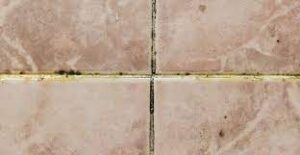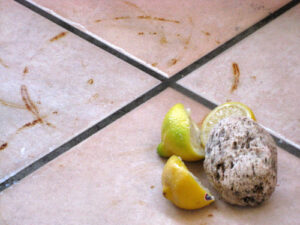How to Remove Tough Stains from Tiles: A Comprehensive Guide
Tiles are a popular choice for flooring and wall covering due to their durability and aesthetic appeal. However, over time, they can accumulate tough stains that seem impossible to remove. Whether it’s stubborn grout stains, wine spills, or grease marks, dealing with these blemishes can be a daunting task. In this comprehensive guide, we’ll walk you through effective methods to remove tough stains from tiles, ensuring your surfaces regain their pristine look.
Introduction
Tiles are a popular choice for flooring and walls due to their durability and aesthetics. However, over time, tough stains can mar their beauty. Whether it’s coffee spills, wine stains, or mold growth, knowing how to remove these stains is essential to maintain the elegance of your space. In this guide, we’ll walk you through various methods and tips on how to effectively remove tough stains from tiles. Say goodbye to unsightly blemishes and welcome back the luster of your tiles!
Understanding Tile Stains
Before diving into stain removal techniques, it’s essential to understand the nature of tile stains. Stains can be broadly categorized into organic and inorganic stains. Organic stains result from materials like food, wine, or mold, while inorganic stains come from substances like grease, oil, or mineral deposits. Identifying the type of stain is crucial in choosing the most effective removal method.
Organic Stains
Organic stains include substances like coffee, tea, and food spills. They can leave behind noticeable marks on your tiles.

Vinegar and Baking Soda:
Here’s a simple way to use vinegar and baking soda to remove stains from tiles. First, mix some baking soda with water to make a paste that’s a bit like toothpaste. Spread this paste over the stain on your tiles. Now, the cool part: sprinkle some vinegar on top of the paste. When they meet, they start to bubble and fizz, like a science experiment.
Leave them alone for a few minutes. It’s like they’re working together to lift the stain off your tiles. After waiting a bit, take a soft brush or cloth and gently scrub the stained area. This helps get rid of the stain. Finally, rinse the spot with water to wash away any leftover stuff. Your tiles should look much better now! Plus, this method is good for the environment because you’re not using harsh chemicals.
Lemon Juice:
Lemon juice is like a superhero against certain stains, like the ones from coffee or food. It’s really easy to use. Squeeze some fresh lemon juice (the kind from real lemons, not a bottle) onto the stain. Let it sit there for a little while, like a short break. After waiting a bit, use a soft brush or cloth to gently scrub the stain.
The lemon juice helps to break down the stain, making it easier to clean. When you’re done scrubbing, rinse the area with water. This washes away the lemon juice and any leftover stain. Lemon juice is like a natural cleaner that comes from lemons, and it even leaves a nice, fresh smell behind!
Grease and Oil Stains
Kitchen tiles are prone to grease and oil stains. These can be particularly stubborn, but there are effective solutions.

Dish Soap and Hot Water:
Imagine using dish soap and hot water to clean your tiles as if you were giving them a warm, bubbly bath. It’s quite simple. Start by preparing a bowl of comfortably warm water, like the kind you’d use for washing dishes. Add just a few drops of dish soap to the warm water; you don’t need much – a little soap goes a long way. Mix it until the water becomes slightly soapy.
Now, you’ve got your cleaning solution ready. Take a soft cloth or sponge, dip it into the soapy water, and gently scrub the stained area on your tiles. Be careful not to scrub too hard to avoid scratching the tiles. Keep scrubbing patiently until the stain begins to vanish. It might take a little time and effort, but eventually, the stain should come clean.
Once you’re satisfied that the stain is gone, rinse the area with clean water to wash away any leftover soap. Your tiles should now look nice and clean. This method is great because it uses everyday dish soap and warm water, much like when you’re doing your dishes.
Baking Soda and Hydrogen Peroxide:

This method is akin to creating a superhero paste to battle tough stains on your tiles. Here’s how you can do it. Start by grabbing some baking soda, which is that white powdery stuff often used for baking. Mix the baking soda with hydrogen peroxide to create a paste. Picture this paste as a powerful cleaner, like your tiles’ very own superhero.
Now, place this paste directly onto the stain on your tiles, making sure the stain is entirely covered. Allow the paste to sit on the stain for a little while, imagining it’s hard at work, breaking down the stain. After waiting for a bit, take a soft brush or cloth and gently scrub the stained area. The paste, combined with your scrubbing, will work together to lift the stain off the tiles.
Once the stain is gone or looks significantly better, rinse the area with water to remove any remaining paste. This method is fantastic for tough stains, and the baking soda and hydrogen peroxide team up like superheroes to help your tiles regain their sparkle.
Mildew and Mold Stains
Bathrooms and damp areas can develop mildew and mold stains over time, posing health risks.

Bleach Solution:
To tackle tough stains on your tiles, consider using a bleach solution. Mix equal parts of bleach and water in a 1:1 ratio to create a potent cleaning mixture. Once you’ve prepared the solution, apply it generously to the stained area.
Let it sit for a few minutes, allowing the bleach to penetrate and break down the stain. Afterward, take a scrub brush or a sponge and gently but thoroughly scrub the affected area. Finally, rinse the tile surface meticulously with clean water to remove any residue.
It’s important to exercise caution when using bleach, ensuring proper ventilation and avoiding contact with skin or eyes. Also, never mix bleach with ammonia or other cleaning agents, as this can produce hazardous fumes.
Vinegar and Borax:
For combating mold and mildew stains, combining vinegar and borax is an effective remedy. First, create a paste by mixing vinegar and borax to form a thick, consistent mixture. Then, apply this paste directly to the mold or mildew-infested areas on your tiles. Use a scrubbing tool to work the paste into the stains, making sure to cover them thoroughly.
Let the vinegar and borax paste sit for a short period to allow it to break down and loosen the mold or mildew. Finally, rinse the tile surface thoroughly with water to remove any remnants of the paste and the now-dislodged stains.
One noteworthy advantage of using borax in this mixture is that it helps prevent future mold and mildew growth, acting as a preventative measure to keep your tiles looking clean and stain-free in the long term.
Rust Stains
Rust stains are common on bathroom tiles due to metal fixtures. Removing them can be a bit challenging.

Lemon and Salt:
Dealing with unsightly rust stains on your tiles? Try this natural and effective method. Begin by generously sprinkling salt over the rust-stained area on your tiles. Afterward, take a fresh lemon and squeeze its juice generously over the salt-covered rust.
Allow this dynamic duo of salt and lemon juice to work its magic for a few hours. The acidity of the lemon juice helps to break down and dissolve the rust, while the abrasive quality of the salt aids in gentle scrubbing. Once the waiting period is over, take a scrubbing brush or sponge and gently work on the stained area, ensuring you cover it thoroughly.
To finish, rinse the tile surface thoroughly with clean water to remove the loosened rust particles and any residual lemon-salt mixture. This method is not only effective but also environmentally friendly, making it a great choice for rust stain removal.
Commercial Rust Removers:
When faced with particularly stubborn or extensive rust stains, it’s wise to consider using a specialized rust remover available at most stores. These commercial rust removers are designed specifically to tackle rust stains effectively. To achieve the best results, it’s crucial to follow the manufacturer’s instructions meticulously.
Typically, this involves applying the rust remover as directed, allowing it to sit for a specified duration, and then rinsing it off thoroughly. While commercial rust removers can be a bit more aggressive, they are often the go-to solution for challenging rust stains that may not respond well to DIY methods. Always ensure proper ventilation when using these products, and take the necessary safety precautions as outlined in the product’s instructions.
HOW TO CLEAN YOUR TILE GROUT AND MAKE IT LOOK NEW AGAIN
Important points to be noticed
Natural Stone Tiles
Keep in mind that natural stone tiles, such as marble or travertine, require special care to avoid damage during stain removal. Consult the manufacturer’s guidelines or seek professional advice when dealing with these tiles.
Porcelain and Ceramic Tiles
Porcelain and ceramic tiles are more forgiving when it comes to stain removal. However, it’s still essential to choose the appropriate cleaning method to avoid any potential damage.
Professional Tile and grout cleaner in Henderson NV
Are your tiles and grout in need of some professional TLC? Look no further! At Clean It to the Max, we specialize in tile and grout cleaning services in Henderson, NV. Our team of experts is ready to make your tiles shine like new. Don’t let tough stains and grime ruin the beauty of your home. Schedule your cleaning today and experience the difference for yourself!
Frequently Asked Questions (FAQs)
Can I use bleach on all types of tiles?
Yes, bleach is generally safe for most tile types. However, it’s essential to check the manufacturer’s guidelines for your specific tiles, as some porous or natural stone tiles may be sensitive to bleach.
Are there any eco-friendly methods to remove tough stains?
Absolutely! Lemon juice, baking soda, and vinegar are eco-friendly and effective stain removers. They are also safer for your health and the environment compared to harsh chemicals.
How can I prevent future stains on my tiles?
Regular cleaning and sealing your tiles can prevent stains from setting in. Use mats or rugs in high-traffic areas to reduce the chances of spills.
Are there any DIY methods to remove stains?
Yes, many DIY methods using common household items like baking soda, vinegar, and lemon juice can effectively remove stains. These are often cost-effective and readily available.
What should I avoid when trying to remove tough stains from tiles?
Avoid using abrasive materials like steel wool, which can scratch the tiles. Also, refrain from mixing different cleaning agents, as this can create harmful fumes.
When should I consider professional tile cleaning services?
If the stains are too stubborn or cover a large area, it’s advisable to consult professional tile cleaning services. They have the expertise and equipment to tackle even the toughest stains.
Conclusion
Maintaining the cleanliness and appearance of your tiles is essential to keep your space looking pristine. Whether it’s organic stains, grease, mildew, or rust, there’s a solution to every tile stain problem. Armed with the knowledge from this guide, you can confidently tackle tough stains and enjoy the beauty of your tiles once again.
Remember that prevention is key, so regular cleaning and proper care will go a long way in keeping your tiles in top condition. Say goodbye to stubborn stains and hello to spotless, gleaming tiles!



